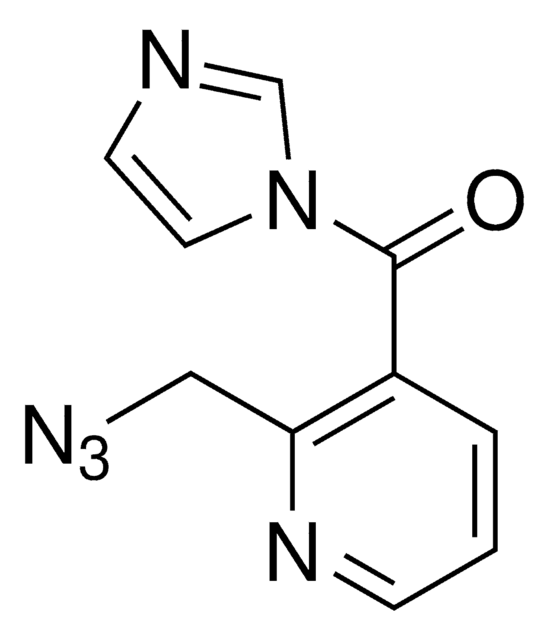913839
2-Methylnicotinic acid imidazolide
Sinónimos:
(1H-imidazol-1-yl)(2-methylpyridin-3-yl)methanone, 1H-Imidazol-1-yl(2-methyl-3-pyridinyl)methanone, 3-(1H-imidazole-1-carbonyl)-2-methylpyridine, NAI, RNA SHAPE probe, RNA structure probe, mNAI
About This Item
Productos recomendados
form
powder
Quality Level
mp
68-72 °C
storage temp.
2-8°C
InChI
1S/C10H9N3O/c1-8-9(3-2-4-12-8)10(14)13-6-5-11-7-13/h2-7H,1H3
InChI key
OWQPEDNXDCVXJO-UHFFFAOYSA-N
Application
Other Notes
Guidelines for SHAPE Reagent Choice and Detection Strategy for RNA Structure Probing Studies
SnapShot: RNA Structure Probing Technologies
Structural Analysis using SHALiPE to Reveal RNA G-Quadruplex Formation in Human Precursor MicroRNA
Determination of in vivo RNA structure in low-abundance transcripts
related product
Storage Class
11 - Combustible Solids
wgk_germany
WGK 3
flash_point_f
Not applicable
flash_point_c
Not applicable
Certificados de análisis (COA)
Busque Certificados de análisis (COA) introduciendo el número de lote del producto. Los números de lote se encuentran en la etiqueta del producto después de las palabras «Lot» o «Batch»
¿Ya tiene este producto?
Encuentre la documentación para los productos que ha comprado recientemente en la Biblioteca de documentos.
Nuestro equipo de científicos tiene experiencia en todas las áreas de investigación: Ciencias de la vida, Ciencia de los materiales, Síntesis química, Cromatografía, Analítica y muchas otras.
Póngase en contacto con el Servicio técnico







